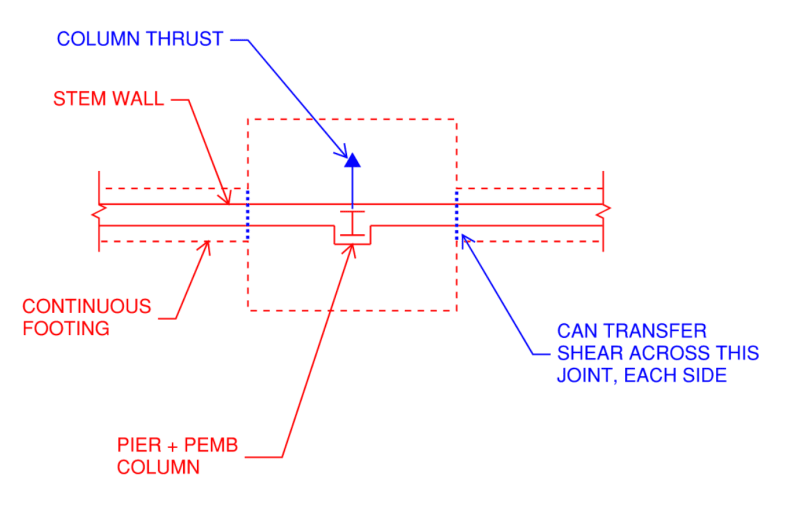See below. In a traditional PEMB with perimeter column footings, do you ever consider the continuous footings to aid in sliding resistance? It's not something I have done, usually I design the column footing isolated to resist overturning and sliding, or hairpin to the slab for sliding resistance. I see no mention in Newman of using some portion of an adjacent continuous wall footing to resist sliding, not sure how that would be quantified (using the whole trib width?). Just wondering if this is something that others have considered as I can't see any reference to it.


